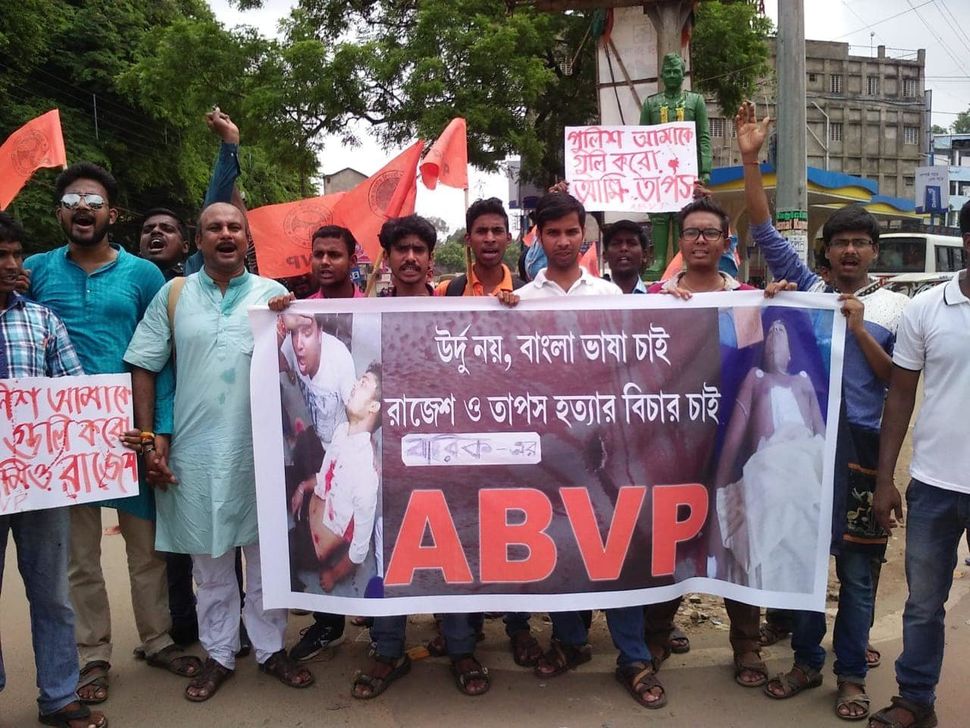
ISLAMPUR, West Bengal —Scroll down Biplab’s Facebook page and you’ll see a photo of him sporting a fade haircut, a gloomy quote on being single, a selfie with friends and the lyrics of popular Bengali song. His WhatsApp display image, however, is of Ram aiming a bow-and-arrow against a background of flames.
“We don’t have Urdu students in the school. Why did the school get an Urdu teacher?” said Biplab, who is 16, as he fiddled with the ropes of a string bed laid out in front of his one-storey house in Darivit, a small village in Islampur, a West Bengal town near the Bangladesh border.
Yet what sounds like a routine complaint about school teachers turned into a communal conflagration last September and brought life in this town to a halt.The ripples of the riot, which left two young men dead and Biplab with a bullet wound to his leg, continue to this day and are likely to affect the election scheduled for 18 April.
Seven months on, the deadly argument over the appointment of an Urdu teacher to a local school illustrates how the ruling Trinamool Congress’s sops to the male religious heads of the Muslim community, and the BJP’s relentless efforts to instil fear in the minds of Hindu voters that they will become a minority in Bengal, have created an almost unbridgeable gulf between the two communities.
These deaths indicate how everyday life in towns and villages across India has become so irrevocably polarised that even the appointment of a school teacher can pit Hindus and Muslims against each other. The price of this lethal politics is becoming almost impossible for society to sustain.
The bodies of the two dead men — who the locals believe were shot by the police — have been buried, but not cremated, as their families insist on an inquiry by the Central Bureau of Investigation. The police have denied firing at the crowd. Five months since the death of their children, the families haven’t even received the autopsy reports from the police.
The only two Muslim staff members at the school have not gone back to work since the clashes erupted, a person familiar with the matter told HuffPost India, and students — essentially a group of children who live in adjoining neighbourhoods — have been divided along religious lines.
“We talk and work together when there are group activities and stuff,” Biplab said of the Hindu and Muslim children in his school.“But they stay with their guys, we stay with ours.”
“URDU GO BACK”
Manju Barman remembers her son disappearing in a cloud of smoke from tear gas shells, and minutes later, staggering back in sight, his t-shirt soaked in blood.
“He kept saying ‘I’m okay, I’m okay’. I was screaming in horror, so he tried to calm me,” Barman said. 21-year-old Tapas died a day later of gun-shot wounds at a local hospital.
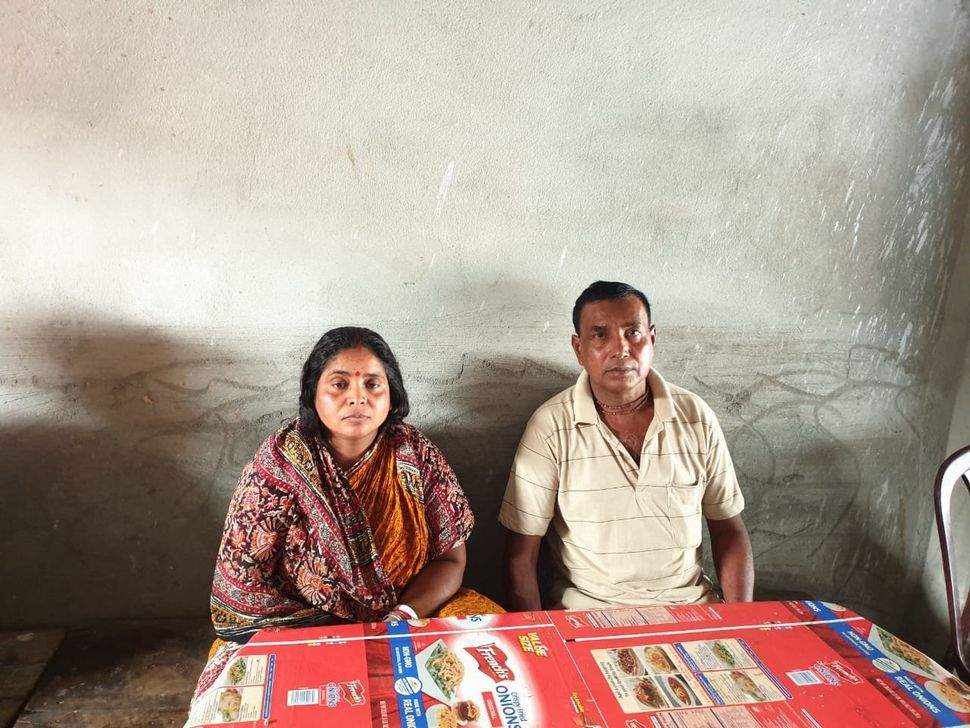
Manju was sitting on a wooden bench in their sweet shop, where half-a-dozen massive flex boards with photos of her son’s dead body plastered on them were piled against a wall. The boards, with slogans condemning Mamata Banerjee’s government, were made by the BJP and are meant to be plastered across Islampur. A BJP flag fluttered in behind a faded sign board for a catering service Tapas had started.
Months after the clashes, the exact sequence of events leading up to the riot in Islampur, and the deaths that followed, is still a matter of dispute.
Some locals say the clashes broke out when students of the Darivit High School staged a protest against two new teachers — one for Urdu, one for Sanskrit — who arrived at the school premises on September 20 2018, ready to start on the job.
Yet this was no ordinary school day. In the days prior to their arrival, the school’s students had taken to protesting against the appointment of the Urdu teacher — a language now associated with Muslims.
Biplab, the student, claimed that they were demanding science teachers instead. While local BJP workers repeated Biplab’s claim, they also presented a theory of impending persecution of Hindus which the student never brought up.
Raju, a local BJP worker who gave only his first name, claimed that the appointment of an Urdu teacher was a ploy to get more Muslim students to enroll in the school, which would eventually lead to Muslims taking control of the village.
He added that there are 150 shops in Darivit, out of which not a single one belonged to Muslims. “Everyone knows there’s no place for Muslims in the village. They come from other villages, work and go away and we are okay with that. But the local panchayat person wanted to employ a Urdu teacher forcibly, why?” Raju said. To illustrate his point, he said that if a Muslim offered to pay Rs 25lakh for a piece of land owned by a Hindu and worth Rs5 lakh, the latter won’t sell him the land. “The Hindu villager will sell it to some one who pays even less than that,” he said.
While Biplab made no mention of it, Raju said the students made a slogan ‘Urdu go back’ and then made it go ‘viral’. “They did not viral the Sanskrit teacher.”
Locals also alleged that they’ve heard rumours that the local TMC panchayat samiti head had been promised a position of power in the party in exchange of placing a Urdu teacher in the school. “But we have only heard all this, we don’t have any proof,” Burman’s neighbour said.
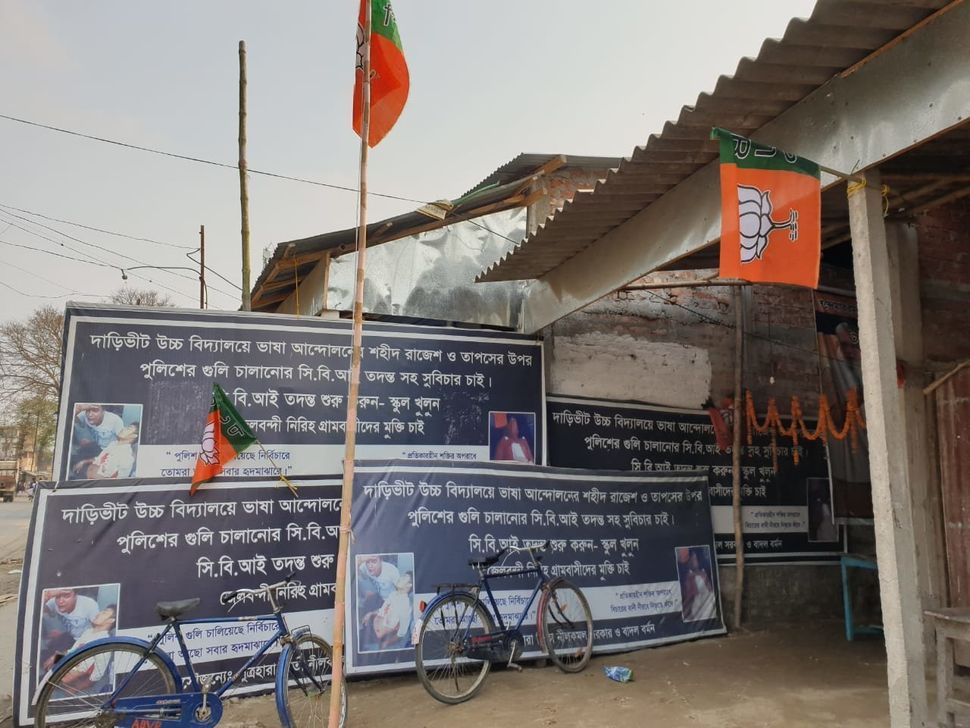
A crowd gathered at the school, the local police also arrived. A melee ensued, shots were fired, and Tapas Barman, Manju’s son, and Rajesh Sarkar — neither of whom were enrolled in the school as students — died of gunshot wounds.
The police has denied killing the two men, and an inquiry is underway.
Villagers in Darivit allege that a tempo escorting the injured to the Islampur hospital faced an attack from a mob from a neighbouring Muslim village, less than three kilometres away from the school. A journalist based in Islampur told HuffPost India that during his conversations with locals in the neighbouring village Amaljhari, he was told that the vehicle was stopped for a few minutes as rumour had spread about a Muslim teacher being beaten up in Darivit, and then allowed to leave when they saw the injured.
When HuffPost India called up the local police, two officers refused to comment on the incident. One said that since the case was being handled by the CID, they were the ones who should be speaking about the case.
Yet, this ‘attack’ — believed to have taken place by Darivit villagers and denied by their neighbours — has driven a wedge between two communities, who recollected living in peace for decades.
Meanwhile, rumour has taken the place of fact, and since then the Rashtriya Swayamsevak Sangh (RSS)’s student wing — the Akhil Bharatiya Vidyarthi Parishad (ABVP)— has been peddling its own divisive, and false, narrative on social media.
Versions of Raju’s theory have been floating around Islampur, online, in social media posts calling for Hindus to unite, and offline, through eager locals who claim Muslims are ‘overthrowing’ Hindus.
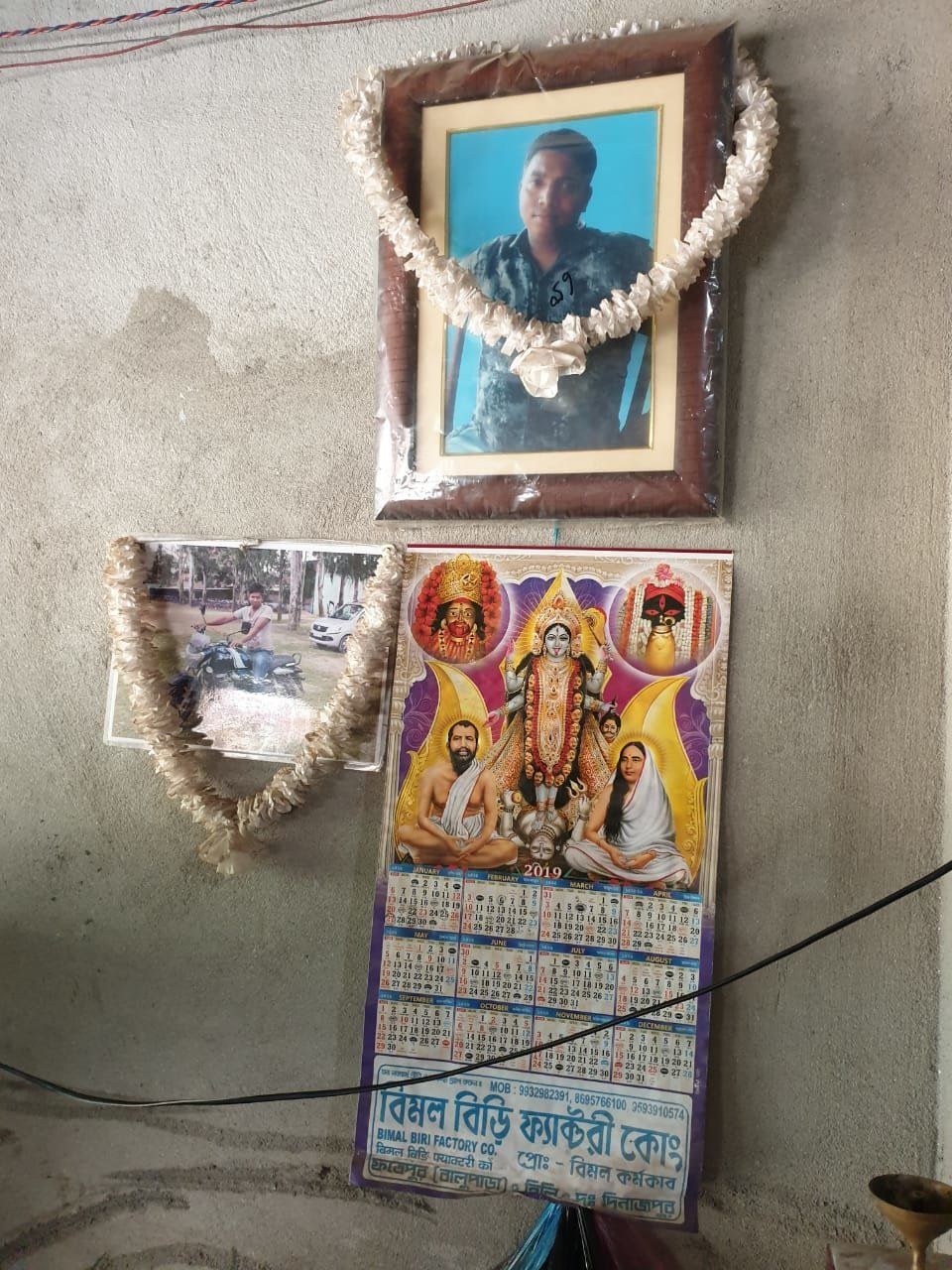
When HuffPost India called the only two Muslim employees of Darivit high school — a teacher and a clerk who had worked there for the past 7-8 years — one sounded alarmed and said he had nothing to say before hanging up. The other muttered something about being in a ‘training’ course and again, hastily hung up. A person, who spoke on condition of anonymity, said that the only plausible reason the men refused to turn up for work would be fear.
Fake News and Polarisation
Within days of the protests and the deaths, the headquarters of the Akhil Bharatiya Vidyarthi Parishad, the student wing of the RSS, was bustling as activists worked hard to spin the story into a Hindu-vs-Muslim conflict, and more specifically, a Bengali-vs-Urdu conflict.
This is despite the fact that the protests were never about the need for a Bengali-language teacher, a fact confirmed to HuffPost India by BJP workers as well.
On 23 September, three days after Rajesh’s death, ABVP called for a rally to protest the killings and immediately linked it to the “larger issue of Bangladeshi infiltration”.
Its main Twitter handle tweeted out a poster that proclaimed ‘we want Bengali, not Urdu’. The same posters also painted the incident with a communal brush by demanding citizenship for Hindu refugees from Bangladesh, the passing of the controversial Citizenship amendment bill and deportation of illegal immigrants. By doing this, the outfit also attempted to associate Bengali as a language of Hindus where as thousands of Muslims in the state, including ones HuffPost India spoke to for this article, speak Bengali.
A series of Facebook posts, meticulously designed and shared right from the day of the deaths itself by verified, official pages of the ABVP, claimed that the students were demanding Bengali teachers but the school hired Urdu teachers instead. Sit-in demonstrations were called for across the state, numerous photos of which the ABVP uploaded on social media pages, amplifying their false claim. The posters, tweets and photos conveniently omitted the fact that a Sanskrit teacher had also been recruited at the same time as the Urdu one, and that the students had been supposedly asking for science teachers, not Bengali language ones.
““Urdu Noi, Bangla Chai (Don’t want Urdu, Want Bengali),” the posters screamed.”
“Urdu Noi, Bangla Chai (Don’t want Urdu, Want Bengali),” the posters screamed. In a tweet still pinned on his Twitter profile, Asish Chauhan, the national general secretary of the ABVP, claimed that the police had cracked down on students for demanding Bengali teachers instead of Urdu ones.
The tweet put out by the handle — followed by Prime Minister Narendra Modi — had been retweeted 2,700 times and liked 3,300 times. Websites such as Rightlog propelled the lie in articles where they went a step ahead to claim that, instead of a Bengali teacher, the school had recruited three Urdu teachers.
Pasarul Alam, a school teacher in Islampur and a member of National Alliance Of People’s Movements, told HuffPost India that it was strange that the students had got together to protest the teachers joining.
“How do students come to know which teacher is being recruited and when? Unless someone—a teacher or an insider—tells them and they are provoked?” he said.
When HuffPost India asked Biplab how he found out about the teacher recruitment, he said the older boys at school had been telling people. But he couldn’t identify one person who first said it, nor could he explain how he came to know when the Urdu and Sanskrit teachers had arrived on the school premises on the day of the clashes.
“We did not know. I was in class and then suddenly everyone was rushing to the headmaster’s office. We came to know that the Urdu teacher was there,” he said. He explained that they then took it upon themselves to explain the younger students — as young as nine and ten years old — that the school was harming their studies by not hiring science teachers.
Earlier, Surojit Roy, a BJP leader in Islampur had explained how class V students took to vandalising school furniture when they saw older students protesting.

The person cited earlier, who is familiar with the school’s functioning, said the institution — which has 1600 students — didn’t have a single permanent teacher for science subjects. The students, the person said, had occasionally approached teachers a few times earlier asking if science teachers would be recruited.
“In 2018, there was just one student who had taken the board examinations in Urdu. There are about 100-150 Muslim students in the school, but they mostly study in Bengali,” the person said.
However, Alam said that he discovered during his investigations that in 2018, Darivit High School’s administration abruptly handed transfer certificates to 165 Muslim students, asking them to go to other schools. While some went to Manibhita High School in the neighbouring village, others spread out. “A few students came to my school, Islampur High School as well.” A representative of Darivit High School said he could not comment on the transfer of students.
Meanwhile, Roy, the BJP leader, told HuffPost India that on 19 September, a day after the first round of students’ protests in Darivit, students in Manibhita High School set up a road blockade and vandalised their school, demanding Urdu teachers instead of Bengali ones at their school.
“Why the police never went there to arrest anyone?” he asked.
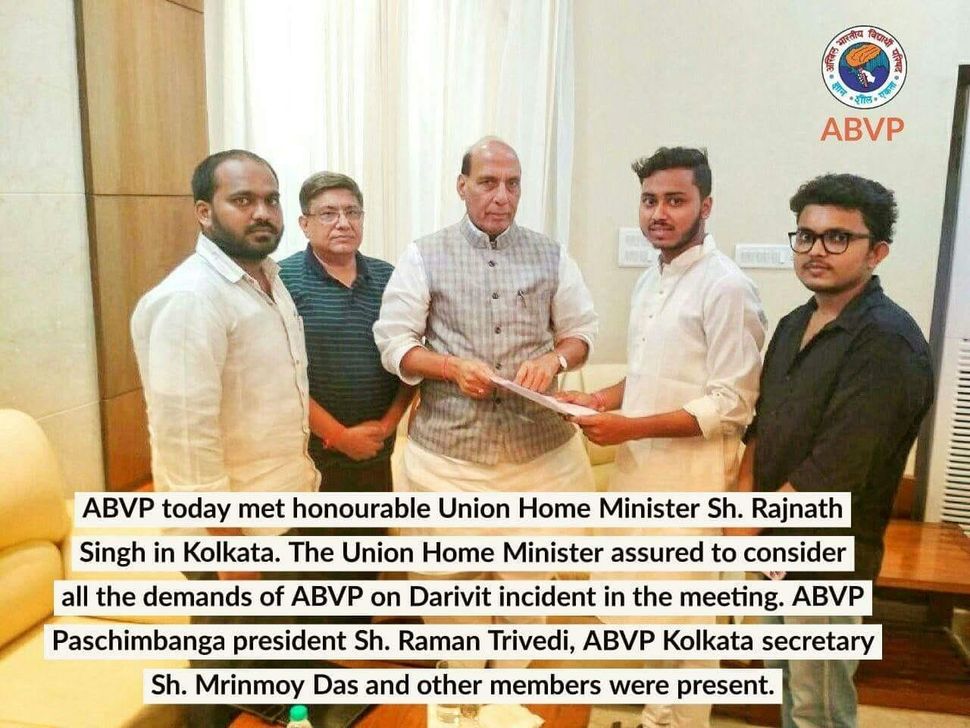
Ujir Alom, the teacher-in-charge (TIC) of the Manibhita High School, confirmed that students and the parents had blocked roads and vandalised vehicles. In the school, said Alom, 55% of the 2,200 students speak and read in Urdu, and the remaining 45% study in Bengali. Yet, the school has not had a Urdu teacher since 2014. The former TIC of the school also told HuffPost India that he had asked for Urdu teachers during his tenure, but even until his retirement, there was no progress.
“So when they heard that a Urdu teacher has been sent to Darivit when no one in the school even wanted one, they got angry. They have been asking for a Urdu teacher for months now,” Alom said, adding with just 16 teachers, he feels desperate at most times.
Linguistic Conflict
Islampur became a part of West Bengal in 1956 and was carved out of Bihar’s Purnea district. A majority of the residents of the area, as a result were speakers of Hindi and Urdu. When the Left Front came to power in Bengal in the ’70s, Alam said, government insisted on Bengali being taught more extensively than Urdu, or Hindi. “As a result, there were high drop-out rates in schools, with students moving to Bihar for studies,” Alam said.
HuffPost India found posters of residential schools and entrance coaching classes from Bihar slapped on walls of schools across villages like Monibhita. A representative of Insan, a popular coaching institute for girls in Kishanganj in Bihar, confirmed that they get several from Islampur. “They insist we teach in Urdu, or Bengali, but we explain the importance of learning English to them,” a representative of the coaching centre told HuffPost India.
In 2012, the Mamata Banerjee government amended the West Bengal Official Language Bill (1961) to make languages spoken by over 10% of an area’s population as one of the official languages of the area. By virtue of that, Urdu is one of the official languages of Islampur.
“Urdu almost disappeared from schools and colleges under the Left regime in the area. There were barely teacher recruitments in the language,” Alam said. After extensive campaigning by locals, and letters to government offices, the area saw a slim resurgence in Urdu teaching.
“The Hindus in border areas feel they have been driven out of Bangladesh and now Muslims are taking ‘their’ Hindu land. And Muslims feel this is needless attack on them.””
But the tension, created by the incorporation of Islampur, the imposition of Bengali and the proximity to the Bangladesh border and influx of refugees from both religions remained. Nearly 25 years ago, Alam said, at Jibon More in Islampur town, five Muslims were killed in clashes with Hindu refugees who had moved from Bangladesh and allegedly wanted land owned by the Muslims. Ten years later, a Hindu boy was murdered in a village in Islampur over similar clashes.
A journalist from the area pointed out there’s a deep feeling of persecution that has been dormant for over a decade among both communities in border towns, one that has now been fanned into violence by both TMC and BJP. “The Hindus in border areas feel they have been driven out of Bangladesh and now Muslims are taking ‘their’ Hindu land. And Muslims feel this is needless attack on them.”
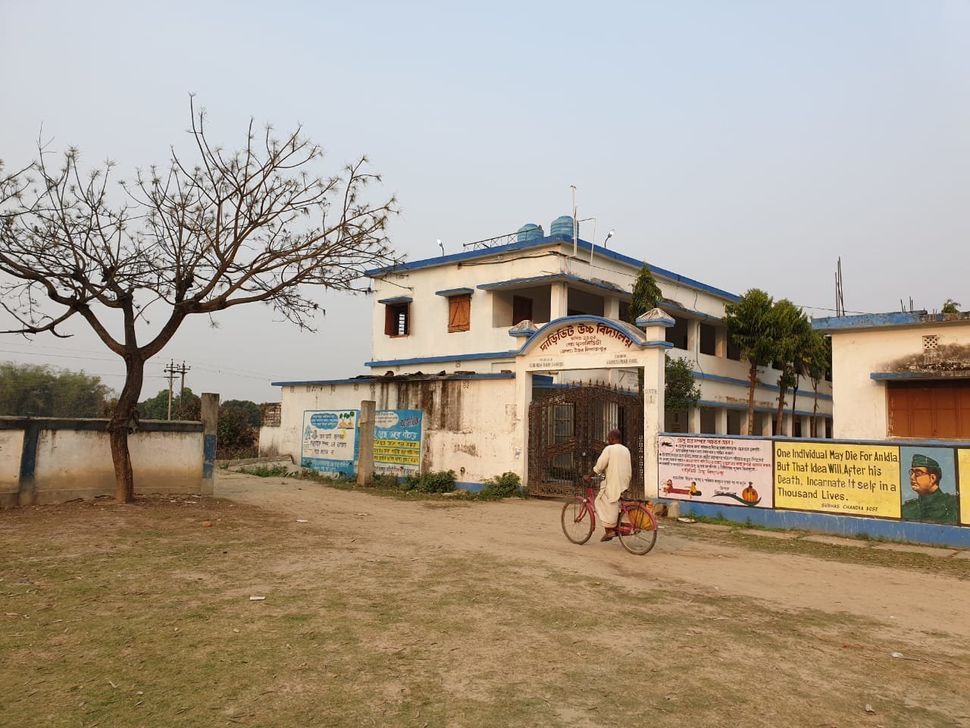
ABVP’s manipulation of the students’ protests into a narrative that ‘Hindus are in danger’ therefore tapped this discontent, which snowballed into a Hindu-Muslim tussle over land. The Trinamool Congress — which has been accused by locals of trying to strong-arm recruitments in the school — added fuel to fire, when ministers blamed RSS and BJP for the deaths with no proof.
Since 2014, Islampur has seen a resurgence in Hindutva, and BJP workers told HuffPost India that the ‘second largest’ Ram Navami procession in India is hosted by the town and fronted by the VHP.
“Last time, we had 120 DJs and 70 quintals of khichdi. This year, we’ll have more,” one of the workers said.
A school run by the RSS also hit the news for allegedly changing its address to ‘Iswarpur’ from ‘Islampur’. Khudiram Roy, the principal of the Saraswati Shishu Mandir, said that the West Bengal government rescinded its affiliation after it learnt of the incident through media reports. However, two months later, parents demonstrated, set up a road blockade and the government returned the affiliation after a court order. However, this time, all documents pertaining to the school say it is in ‘Islampur’. Personally, said the principal, he thinks the place should be called Iswarpur. After admissions dropped, however, he is settling for Islampur.
“A school run by the RSS also hit the news for allegedly changing its address to ‘Iswarpur’ from ‘Islampur’.”
These series of seemingly harmless events simmer on the surface of a larger communal discontent stoked by political parties in the area. Dozens of Facebook pages calling Islampur ‘Iswarpur’ have mushroomed on Facebook. On social media, squabbles over Hindu and Muslim religious functions aren’t rare as well. For example, HuffPost India came across the a Facebook status message posted by a Muslim car dealer saying he was bothered by the loudpseakers, DJs and motor cycle army of the Ram Navami procession. A Hindu man popped in to say: “First Muslims should stop their processions.” In response, the dealer said, “Both sides should stop.”
BJP versus TMC
“There was no BJP here for a while, now it’s only us,” beamed Roy as he made calls to set up meetings for this reporter with the families of Tapas and Rajesh. He chastised a party worker for not keeping an eye on a TV crew in the area and then told HuffPost India, “This is the state’s biggest issue now. This is our biggest issue.”
While Raju and Roy confirmed that neither of the dead young men were associated with the BJP or any party, the ABVP’s posters and social media posts claimed Rajesh was an assistant general secretary of the outfit in Darivit.
“ABVP’s posters — exhibited at rallies across West Bengal — scream a plethora of anti-Muslim slogans. “Chhatro Mere, Muslim Prem? (Killing Students, Loving Muslims?)”, ’They want a Bengali Prime Minister, They don’t want a Bengali teacher?””
ABVP’s posters — exhibited at rallies across West Bengal — scream a plethora of anti-Muslim slogans. “Chhatro Mere, Muslim Prem? (Killing Students, Loving Muslims?)”, ’They want a Bengali Prime Minister, They don’t want a Bengali teacher?”, “Bangla Hoeche Por, Urdu Apon, Chhatro Mere, Haye Re Unnoyon? (Bengali is other, Urdu your own, Killing students is your development?). The same pages uploaded pictures of local ABVP leaders with home minister Rajnath Singh, claiming he had promised to look into the matter.
Facebook posts show students from the school attending marches organised by the ABVP, holding the organisation’s posters. Though ABVP office-bearers confirmed that they only operate on college level, the photos show young school students posing with ABVP posters in Darivit.
The BJP candidate from Raiganj, Islampur’s Lok Sabha constituency , kicked off her campaign by lighting candles at the graves of the young men and then parading their mothers across the area.
“Mamata Banerjee can’t even enter Darivit now,” a BJP leader said.
Several TMC leaders have had to shift their meeting venues after protests from locals. The CPM has demanded a probe into the incident and has been warning voters against the dangers of voting for either the BJP or the TMC instead of following their ‘true secularism’.
Meanwhile, the CID has sent several notices to Barman and Sarkar’s families, requesting them to participate in the investigation.
“But we have refused, we only want a CBI probe,” said Ujjwal, Tapas’s father. The families were taken to Delhi by the BJP to meet Amit Shah. The party shared photos of Ujjwal with Shah on social media.
“He said he will look into the matter, but I have not heard from them since,” Ujjwal said.
Manju pointed at indentions on the concrete on the wall she’s leaning against.
“Can you see this?” she said, running her fingers over the wave-like dents on the wall, “Tapas marked them a few days before he died. He wanted the part below to be fitted with tiles. He had many, many dreams.”